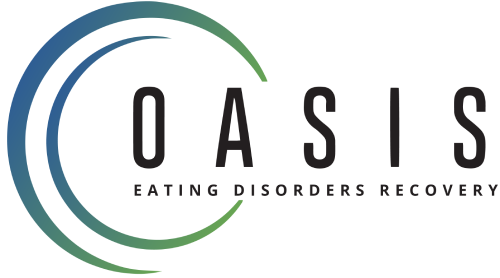In our work across the Central Valley—including communities like Fresno, Clovis, Selma, and Visalia—we frequently encounter individuals and families who are unsure whether the eating behaviors they’re observing fall under the category of disordered eating or a diagnosable eating disorder. The confusion is understandable: behaviors like skipping meals, cutting out entire food groups, or obsessing over weight loss are often normalized in today’s diet-driven culture.
At Oasis Eating Disorder Recovery, our treatment center near you believes that understanding the distinction between disordered eating and eating disorders is crucial. While not all disordered patterns meet the diagnostic criteria found in the DSM-5 (Diagnostic and Statistical Manual of Mental Disorders), they can still severely impact a person’s mental health, self-image, and overall well-being—and, left unaddressed, may escalate into a full-blown eating disorder.
What Is Disordered Eating?
Disordered eating refers to a wide range of irregular eating habits that may include restrictive eating, overeating, frequent dieting, or anxiety around food. These behaviors don’t necessarily meet the clinical threshold for an eating disorder, but they often reflect a complicated relationship with food, body weight, and body image.
Common signs of disordered eating include:
- Skipping meals or limiting food intake without medical necessity
- Avoiding entire food groups (like carbs or fats) due to fear of weight gain
- Obsession with calorie counting, macros, or fad diets
- Excessive exercise to “burn off” food
- Feelings of guilt or shame after eating
- Bingeing during a short period, especially after restriction
Disordered eating can affect anyone but is particularly common in adolescents, young adults, and those exposed to unrealistic body shape ideals on social media. It often emerges during transitions—starting high school or college, recovering from illness, or after a stressful life event—and may be seen as a way to regain control.
What Are Eating Disorders?
Eating disorders, on the other hand, are serious mental illnesses with defined diagnostic criteria outlined in the DSM-5. These conditions involve persistent disturbances in eating patterns, preoccupation with body weight, or behaviors that jeopardize both mental and physical health.
The most common types of eating disorders include:
- Anorexia nervosa: extreme food restriction, intense fear of gaining weight, and a distorted body image
- Bulimia nervosa: repeated cycles of binging followed by purging through self-induced vomiting, laxatives, or diuretics
- Binge eating disorder: consuming large amounts of food in a short time without compensatory behaviors
- ARFID (Avoidant/Restrictive Food Intake Disorder): restrictive eating not motivated by body image but often sensory sensitivity or fear of choking
- OSFED (Other Specified Feeding or Eating Disorder): presentations that don’t neatly fit the above but still cause life-threatening consequences
Eating disorders require comprehensive treatment from healthcare professionals, including mental health professionals, dietitians, and psychiatry providers. According to the National Eating Disorders Association, early detection and intervention significantly improve the likelihood of recovery.
Shared Risk Factors and Warning Signs
While disordered eating behaviors and eating disorders differ in severity and duration, they often share similar risk factors and warning signs. These may include:
- Low self-esteem and high self-criticism
- Perfectionism or need for control
- Negative experiences related to weight or appearance
- Exposure to fad diets or food restriction trends
- Mental health conditions like anxiety or depression
- Traumatic or stressful life events
- Genetic predisposition or family history
It’s important to remember that eating disorders don’t always “look” a certain way. A person may appear physically healthy while engaging in dangerous behaviors like purging, abusing laxatives, or fasting for days. There is no one-size-fits-all appearance for someone who is struggling.
Why the Distinction Matters
Understanding the difference between disordered eating patterns and clinical eating disorders can guide timely interventions. A teen cutting out food groups or obsessing over clean eating may not meet the formal criteria for anorexia nervosa, but those behaviors are not benign—they can still lead to nutritional deficiencies, preoccupation with food, and eventual progression into a diagnosed disorder.
Moreover, individuals with disordered eating often wait until symptoms worsen before seeking help, assuming their struggle is “not serious enough.” At Oasis, we encourage early, proactive care. Whether it’s a conversation with a loved one, a screening with a mental health professional, or a consultation with a dietitian, small steps taken early can prevent long-term harm.
When to Seek Help
If you’re unsure whether what you’re experiencing—or witnessing in someone else—is disordered eating or an eating disorder, it’s better to err on the side of caution. Here are some signs of an eating disorder:
- Drastic changes in eating habits, weight, or exercise
- Intense anxiety around meals or eating in front of others
- Ritualistic behaviors (e.g., cutting food into tiny pieces)
- Avoidance of social activities that involve food
- Mood swings, isolation, or obsessive preoccupation with body image
- Sudden weight loss or weight gain without medical explanation
- Physical symptoms such as fatigue, dizziness, or irregular menstruation
Seeking care doesn’t require a formal diagnosis. Whether you’re in Hanford, Madera, or Kingsburg, Oasis offers comprehensive outpatient care and support for individuals at every stage of their relationship with food.
Our Approach at Oasis Eating Disorder Recovery
At our Central Valley locations, Oasis offers evidence-based care for both disordered eating and clinically diagnosed eating disorders. Our treatment plans are collaborative, trauma-informed, and rooted in current research, including case-control studies and systematic reviews.
Our team includes licensed mental health professionals, dietitians, medical staff, and experienced therapists trained in:
- Cognitive Behavioral Therapy (CBT)
- Dialectical Behavior Therapy (DBT)
- Nutritional counseling and meal planning
- Medication management
- Family therapy and community support
We treat each client as a whole person—not a diagnosis. Whether you are dealing with ARFID, OSFED, or years of restrictive eating, we adapt our approach to suit your needs and goals.
Supporting a Loved One
If you’re concerned about a loved one, try approaching the topic with care and curiosity. Avoid commenting on appearance or body weight, and instead focus on how the person is feeling. Mention specific behaviors you’ve noticed and express concern for their well-being.
You can say:
- “I’ve noticed you haven’t been eating much lately. Is everything okay?”
- “You seem really anxious around food—do you want to talk about it?”
- “I read something about eating disorders that reminded me of what you’ve been going through. Would you be open to getting support?”
Even if the person isn’t ready to seek help, your concern can plant the seed for future action. Let them know that help is available and that they don’t have to do it alone.
The Path Forward
Whether you’re navigating disordered eating behaviors or managing a diagnosed eating disorder, recovery is possible—and it begins with awareness, support, and compassionate care. At Oasis Eating Disorder Recovery, we proudly serve individuals across the Central Valley, offering hope and healing to communities in Fresno, Selma, Tulare, Bakersfield, and beyond.
You don’t have to wait for a crisis to get help. Reach out today to learn more about our programs, talk with a clinician, or schedule a confidential screening. No matter where you are in your journey, Oasis is here to support your next step toward mental health, nourishment, and lasting recovery.

